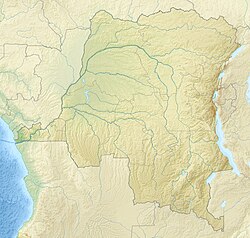| Afrixalus upembae | |
|---|---|
| Scientific classification | |
| Kingdom: | Animalia |
| Phylum: | Chordata |
| Class: | Amphibia |
| Order: | Anura |
| Family: | Hyperoliidae |
| Genus: | Afrixalus |
| Species: | A. upembae |
| Binomial name | |
| Afrixalus upembae (Laurent, 1941) | |
| Synonyms [2] | |
| |
Afrixalus upembae is a species of frog in the family Hyperoliidae. It is endemic to the Democratic Republic of the Congo and is known from the lower Katanga Province (=Shaba Province), [1] [2] [3] [4] although its true distribution might be wider; [1] possibly reaching eastern Angola. [5] It belongs to the taxonomically unresolved " Afrixalus quadrivittatus complex", [1] [3] [4] and it is not even clear that it is a valid species. [1]

